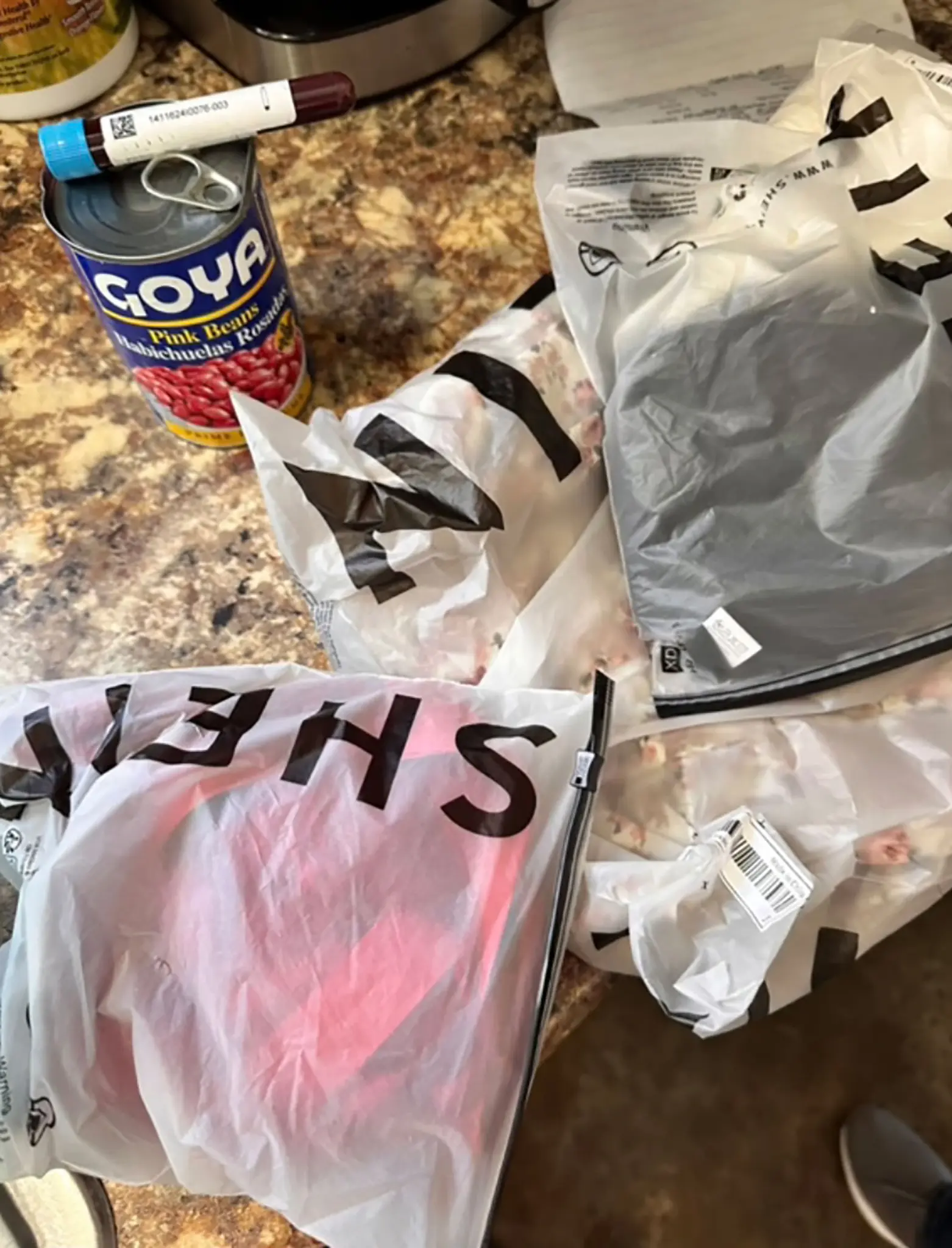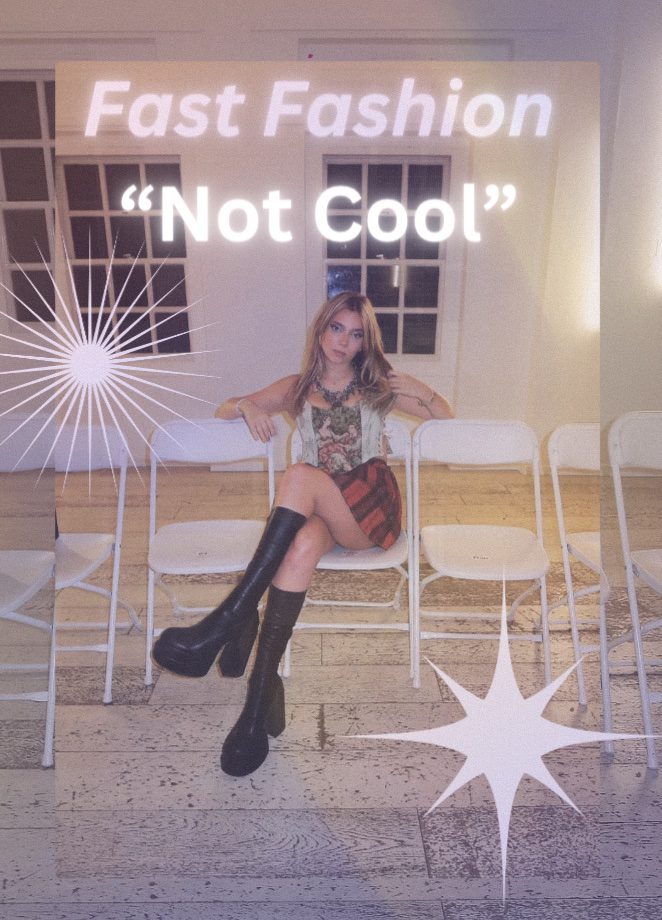Grab your popcorn, folks—because the latest chapter in the epic showdown of the fast-fashion world has just dropped, and it’s nothing short of a blockbuster. Picture this: Shein and Temu, the dynamic duo of digital fashion, locked in a courtroom brawl more intense than any Marvel or Star Wars saga. It’s like watching Darth Vader square off against Thanos—except instead of galactic domination, we’re talking about who stole whose design. In fact, these two titans have become so alike in their fast-fashion evildoing that I’ve dubbed them “SHEMU”—basically two sides of the same coin, battling for control of the same questionable empire. And in their relentless pursuit of fast profits, they’re churning out so much waste and environmental destruction that they’re making the planet we live on ultimately inhabitable.
The Plot Thickens: Shein’s Latest Lawsuit
In the latest twist, Shein has thrown down the gauntlet, filing a lawsuit against Temu in a Washington D.C. federal court. The allegations? Oh, just a casual mix of design theft, counterfeiting, and good old-fashioned fraud. According to Shein, Temu isn’t just competing in the fashion race; it’s allegedly cheating by encouraging its sellers to churn out counterfeit goods and pilfered designs. Temu’s super-low prices are coming under scrutiny, with Shein suggesting that these deals are subsidized by selling shoddy imitations rather than actual quality merchandise. Talk about a plot twist!
Temu’s Retort: “Shein, Seriously?”
Temu’s response? Let’s just say it’s not exactly a love letter. The company has labeled Shein’s lawsuit as audacious, arguing that Shein is essentially accusing Temu of crimes Shein itself is being accused of. Temu’s spokesperson hit back, saying Shein is “buried under its own mountain of IP lawsuits,” and that the accusations are simply a diversion.
The Backstory: A Feud of Epic Proportions
This lawsuit isn’t the first time these two have squared off. Last year, Temu filed its own suit, claiming that Shein was using “mafia-style intimidation” tactics to block suppliers from working with Temu. It’s like a high-stakes game of Monopoly, where one player is trying to corner the market by any means necessary. The drama has reached such heights that it’s no longer just about fashion but about who gets to dictate the rules of the e-commerce game.
Shein’s Allegations: The Nitty-Gritty
Shein’s complaint paints a picture of Temu as a master of deception. The suit claims that Temu’s employees allegedly swiped trade secrets from Shein, including insider information about best-selling products and internal pricing strategies. And if that wasn’t enough, Temu is accused of setting up fake social media accounts that masquerade as Shein to lure unsuspecting customers to its own platform. Think of it as a spy thriller, but with less espionage and more fashion faux pas.
Temu’s Counter-Attack: A Defense of Integrity
In the face of these allegations, Temu argues that Shein’s claims are just a smokescreen. The company insists that Shein is trying to distract from its own legal troubles by accusing Temu of the very misconduct Shein is battling in its own lawsuits. It’s the classic “look over there!” tactic, and it’s clear that both companies are playing hardball in this high-stakes game.
The Takeaway: Don’t Be on Either Team Shein or Team Temu—Join Team Sustainable!
Alright, fashionistas, let’s cut through the courtroom drama and get real. While Shein and Temu battle it out in the legal arena, there’s a bigger picture we need to focus on. Don’t be on either Team Shein or Team Temu—make the switch to Team Sustainable, where the real change happens.
Why? Because both Shein and Temu have their fair share of dirty laundry.
Temu’s Low Prices: A High Cost to the Planet
Temu’s irresistibly low prices might seem like a win for your wallet, but they come with a hefty environmental price tag. Those rock-bottom deals encourage overconsumption, leading to a surge in disposable products. More clothes mean more packaging waste and higher carbon emissions from shipping. And let’s not forget Temu’s production processes, which guzzle water and chemicals like there’s no tomorrow.
Privacy Concerns: Temu’s Digital Footprint
On the digital front, Temu’s app might be mining more than just your shopping habits. Reports suggest that Temu’s permissions could be snooping into your phone’s operating system, IP address, and browsing history. If you’re not a fan of Big Brother peeking over your shoulder, you might want to think twice before tapping “accept.”
Labor Practices: The Dark Side of Fast Fashion
Both Temu and Shein have faced serious allegations regarding labor practices. Temu has been accused of unethical practices, including forced labor. This, combined with claims that both companies might be sidestepping customs duties and inspections, raises red flags about their supply chains. It’s a grim reminder of the human cost behind those bargain-basement prices.
Shein’s Expansion: A Fast Fashion Empire with Environmental Consequences
Shein’s global ambitions are nothing short of staggering. I’ve written about Shein extensively, diving deep into the darker side of its operations. You can check out one of my in-depth blogs here. While the company’s acquisitions and partnerships show its desire to dominate both online and physical retail spaces, the consequences are deeply troubling.
Shein has been repeatedly accused of using toxic chemicals in its clothing, which not only harm the environment but also pose significant health risks to the people who wear them. Independent tests have shown that Shein’s garments sometimes contain dangerous levels of hazardous chemicals like lead and phthalates—substances that can lead to serious long-term health issues.
Labor practices at Shein are another sore point, with the company facing allegations of sweatshop-like conditions, unfair wages, and even forced labor. The treatment of workers in their supply chain has raised ethical concerns across the globe, further tarnishing their reputation. On top of that, Shein’s notorious for design theft, regularly ripping off independent designers and selling knock-offs at rock-bottom prices, leaving the original creators with little recourse.
Environmentally, Shein’s overproduction is a disaster. Their fast fashion model fuels a cycle of mass waste, with tons of unsold clothes ending up in landfills or incinerated. The brand’s relentless pace contributes to a growing environmental crisis, with excessive water consumption, chemical runoff, and a staggering carbon footprint. Their cheap, throwaway garments encourage consumers to buy more, discard more, and think less about the true impact of their fashion choices.
Shein’s rapid growth, both online and through physical retail, may seem like a success story, but it’s one with a dark undercurrent of environmental degradation and exploitation. It’s time to reconsider what we’re supporting with our dollars.
Choosing the Better Path
Instead of getting swept up in the rivalry between these two fast-fashion giants, why not take a stand for sustainability? Now more than ever, it’s crucial to embrace brands that prioritize ethical practices, environmental responsibility, and transparency. By supporting companies that are open about their supply chains and committed to reducing their environmental impact, you are making a powerful statement about the kind of world you want to live in.
So, how do you make that shift? It’s simpler than you might think:
- Shop Slow Fashion Brands: Look for companies that are dedicated to producing high-quality, long-lasting garments made from sustainable materials. Brands like Wolf & Badger curate collections that promote slow fashion and sustainability. They work with independent designers who emphasize ethical production, fair labor practices, and minimal environmental impact. Other great sustainable brands you can explore include Patagonia, Reformation, and Everlane—all of which are committed to transparency and eco-consciousness in their production processes.
- Buy Quality Over Quantity: Invest in high-quality pieces that are designed to last. Fast fashion thrives on the idea of buying cheaply and often, but those purchases tend to wear out quickly, contributing to waste. By opting for well-made clothing, you reduce the need for frequent replacements and help minimize the cycle of overconsumption.
- Thrift or Buy Secondhand: Shopping at thrift stores, vintage shops, or online platforms like Depop, ThredUp, or Poshmark is a fantastic way to give clothing a second life. This not only helps reduce the demand for new products but also keeps perfectly wearable items from ending up in landfills. Plus, thrifting can be a fun, treasure-hunting experience that helps you discover unique pieces while being eco-friendly.
- Borrow or Rent Special Occasion Attire: Instead of buying a brand-new outfit for a special event, consider borrowing from a friend or using rental services like Rent the Runway or HURR Collective. These services allow you to wear high-quality, stylish pieces for a fraction of the cost, without contributing to fashion waste. This is especially great for clothing that you’ll likely only wear once, such as formal wear or event-specific outfits.
- Repair, Don’t Replace: Got a tear in your favorite shirt or a broken zipper? Instead of tossing it out, learn to mend or repair your clothes. YouTube is full of tutorials on basic sewing techniques, and many cities have local tailors or repair services that can help extend the life of your clothing.
- Embrace Capsule Wardrobes: A capsule wardrobe focuses on creating a curated collection of versatile, high-quality essentials that can be mixed and matched in endless ways. This helps reduce impulse buys and encourages thoughtful, intentional purchasing. Stick to classic, timeless pieces that reflect your personal style and can last for years.
- Be a Conscious Consumer: When you do need to shop, take a moment to research the brands you’re buying from. Look for certifications like Fair Trade, GOTS (Global Organic Textile Standard), or OEKO-TEX to ensure the brand is meeting rigorous standards for ethical labor practices and environmental safety.
Remember, every purchase is a vote for the kind of fashion industry we want to see. By choosing slow fashion, sustainable brands, and thoughtful consumption habits, we can collectively push the industry towards more ethical, environmentally responsible practices. Next time you’re tempted by a too-good-to-be-true deal, consider the real cost of your fashion choices—not just for your wallet but for the planet and the people who make our clothes.
Join Team Sustainable, and together we can make a difference—one stylish, eco-friendly choice at a time.
And if you need help, I sell Thrift Bundles and I also help you style thrifted clothes.
Connect with me here and let’s get started.

If you have any questions, please contact me at LexySilverstein@gmail.com
Follow me on my socials: Instagram: @lexysilverstein Youtube: Lexy Silverstein Twitter: @eLEXYfy TikTok: @lexysilverstein Facebook: Lexy Silverstein Liketoknow.it/lexysilverstein










